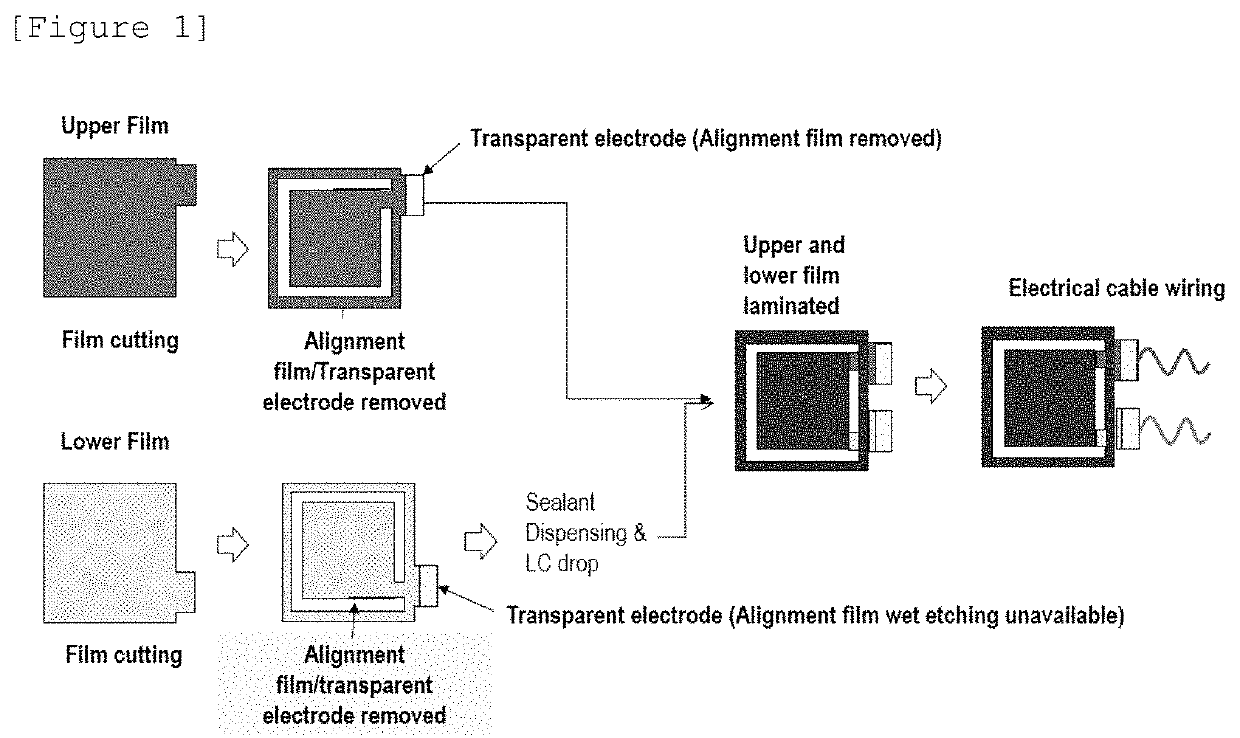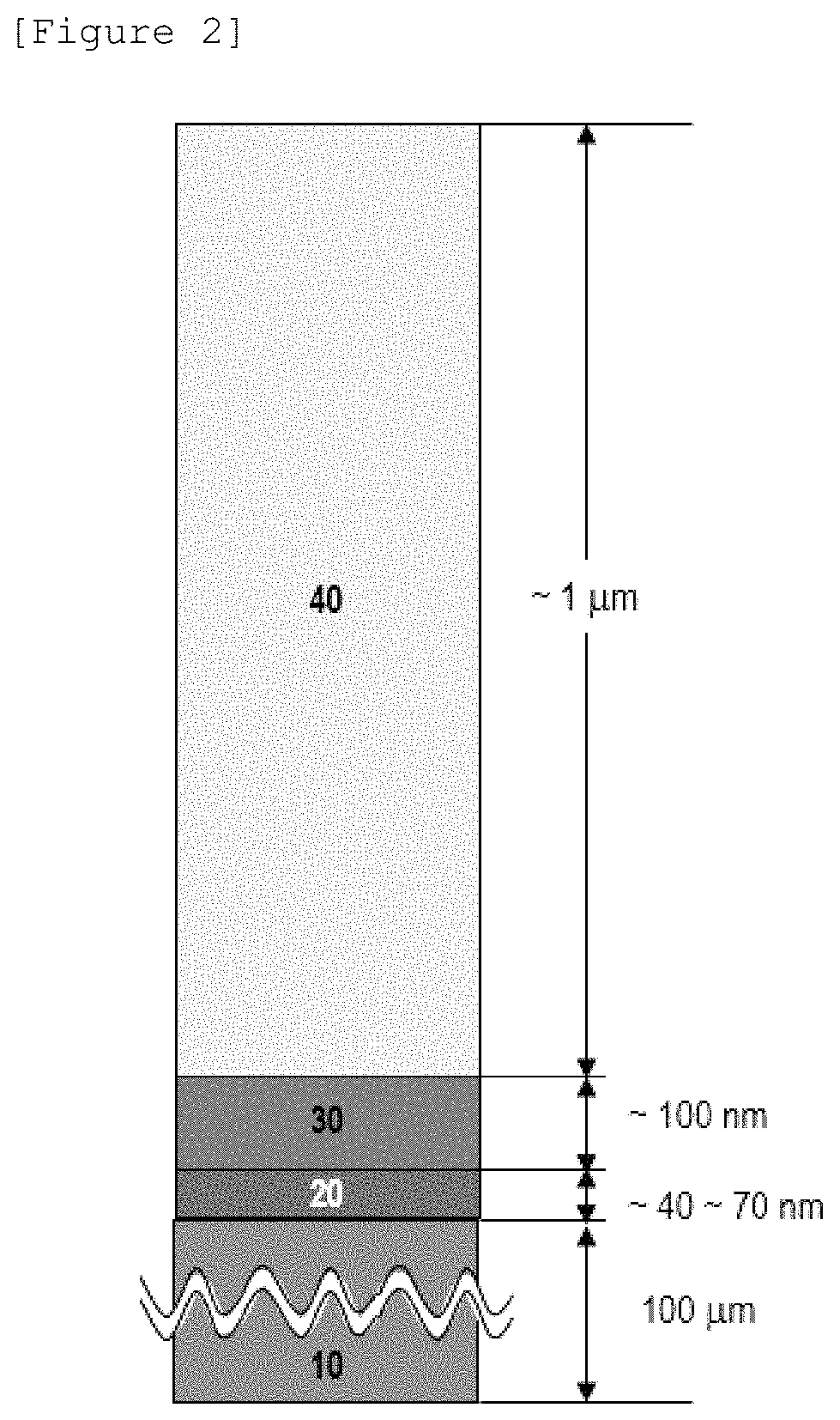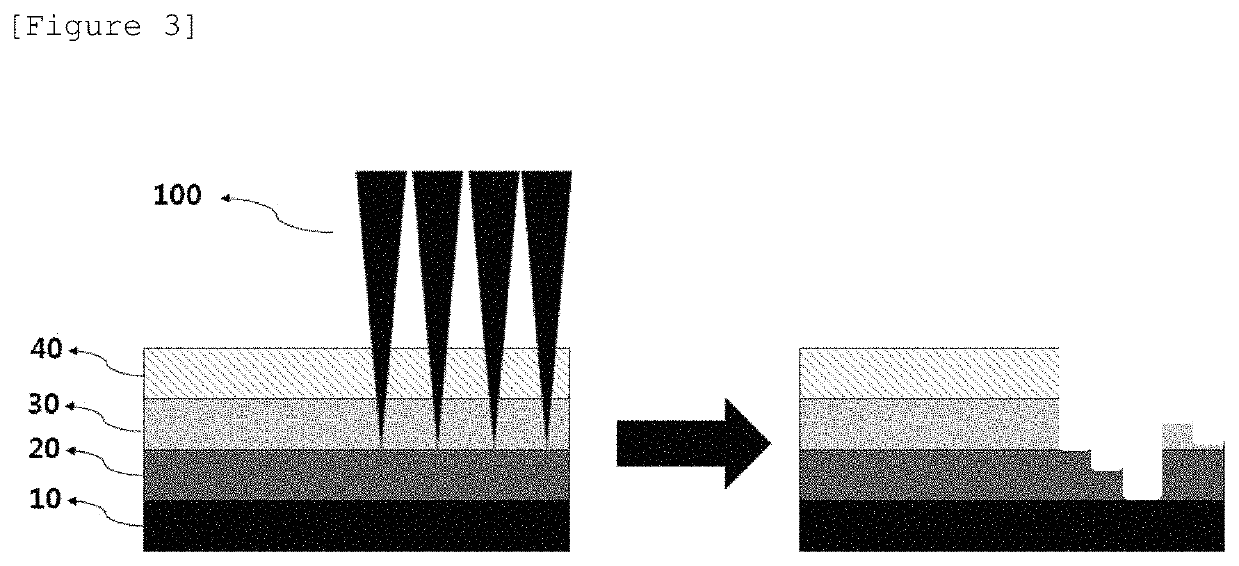Method for forming wire portion of liquid crystal chromic device and liquid crystal chromic device
a wire portion technology, applied in the direction of door/window protective devices, instruments, chemistry apparatus and processes, etc., can solve the problems of increasing the size of the facility, the inability to remove the wire portion by solvent or other wet methods, and the increase in the cost of the facility, so as to improve the productivity and simplify the manufacturing process of the liquid crystal chromic device. , the effect of high reliability
- Summary
- Abstract
- Description
- Claims
- Application Information
AI Technical Summary
Benefits of technology
Problems solved by technology
Method used
Image
Examples
examples 1 to 10
[0135]A COP substrate having a thickness of about 40 μm, a transparent electrode including ITO having a thickness of about 40 nm, an alignment film having a thickness of about 80 nm including a photo-alignment compound (LG CHEM) based on a norbornene resin including a cinnamate functional group, and a liquid crystal alignment film having a thickness of about 1 μm including a reactive mesogen (RMM141C, MERCK) are sequentially provided to prepare a liquid crystal chromic device (1,000 mm×500 mm).
[0136]A fiber laser (G4, SPI, F-theta lens scanner) having an average output of about 50 W and a wavelength of 1064 nm was irradiated onto the liquid crystal chromic device at a repetition rate of 100 kHz, an output ratio of 45% and an irradiation speed of 2 m / s and irradiated in areas having a size of 10 mm×10 mm (width×length) on the liquid crystal alignment film by adjusting an irradiation interval as shown in Table 1 below, respectively, to form etching lines in the liquid crystal chromic ...
examples 11 to 19
[0142]As Examples for a liquid crystal chromic device for a sunroof, a COP substrate having a thickness of about 40 μm, a transparent electrode including ITO having a thickness of about 40 nm, an alignment film having a thickness of about 100 nm including a photo-alignment compound (LG CHEM) based on a norbornene resin including a cinnamate functional group, and a liquid crystal alignment film having a thickness of about 1.2 including a reactive mesogen (RMM141C, MERCK) are sequentially provided to prepare a liquid crystal chromic device.
[0143]In the liquid crystal chromic device, a Galvano Scanner based infrared laser with an average output of about 50 W and a wavelength of 1064 nm was irradiated on the liquid crystal alignment film with respect to a laser irradiation area of 80 mm×5 mm (width×length) at a repetition rate of 100 kHz and an irradiation speed of 2.5 m / s by adjusting the irradiation interval as shown in Table 2 below to form etching lines in the liquid crystal chromic...
experimental example 3
[Experimental Example 3]—Climate Change Test
[0174]A process in which the liquid crystal chromic device provided with the wire portion according to Examples 11 to 19 was heated to a temperature of about 90° C. from a temperature of −40° C. at a speed of about 1° C. / min, maintained for 4 hours, and then lowered to about −40° C. from about 90° C. at a speed of about 1° C. / min, and maintained for 4 hours was repeated ten times to perform a climate evaluation. A graph of temperature and humidity conditions at the time of such a climate change test is shown in FIG. 13.
[0175]FIG. 14 illustrates a photograph of an appearance after evaluating a climate change test of the liquid crystal chromic device provided with the wire portion according to Examples 11 to 19, particularly, a photograph of an appearance after adjusting output ratios of the laser during laser irradiation to 25%, 30%, 35% and 40% with respect to the average output, respectively, and evaluating a climate change test of the li...
PUM
| Property | Measurement | Unit |
|---|---|---|
| thickness | aaaaa | aaaaa |
| size | aaaaa | aaaaa |
| thickness | aaaaa | aaaaa |
Abstract
Description
Claims
Application Information
 Login to View More
Login to View More - R&D
- Intellectual Property
- Life Sciences
- Materials
- Tech Scout
- Unparalleled Data Quality
- Higher Quality Content
- 60% Fewer Hallucinations
Browse by: Latest US Patents, China's latest patents, Technical Efficacy Thesaurus, Application Domain, Technology Topic, Popular Technical Reports.
© 2025 PatSnap. All rights reserved.Legal|Privacy policy|Modern Slavery Act Transparency Statement|Sitemap|About US| Contact US: help@patsnap.com



